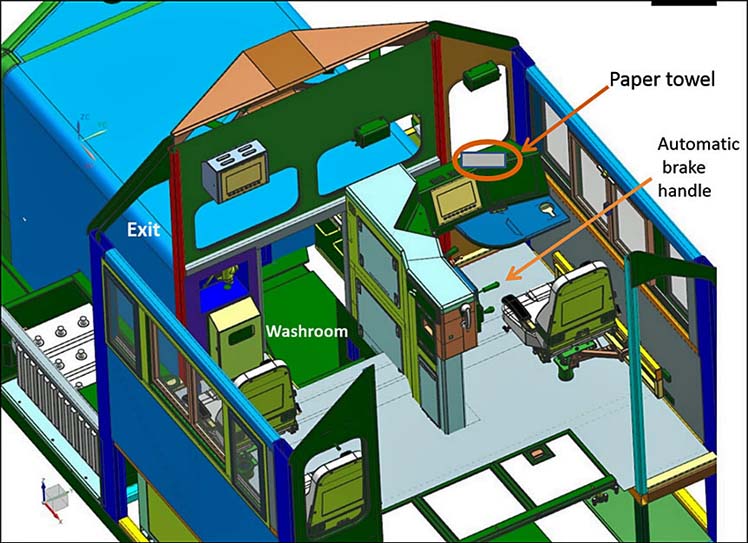
Train Movement Incident
Gatineau Quebec - The Transportation Safety Board of Canada (TSB) released today its
Investigation Report R16W0242 into a November 2016 uncontrolled
train movement, collision, and derailment in Estevan, Saskatchewan.
On 29 Nov 2016 at about 05:15 Central Standard Time, a southbound Canadian Pacific Railway (CP) ballast train rolled uncontrolled in the siding at Estevan,
Saskatchewan, and struck the side of a northbound CP freight train that had just stopped on the main track.
The ballast train locomotive sustained damage and a freight car on the northbound train derailed and sustained minor damage.
No dangerous goods were involved and there were no injuries.
The investigation determined that, while the two crew members from the ballast train were performing a passing train inspection of the northbound train, the
locomotive engineer left his position on the ground and entered the locomotive cab of his train.
While in the cab, he inadvertently moved the automatic brake handle to the release position.
Without realizing that the automatic air brakes were releasing, he returned outside to complete the passing train inspection.
The investigation also found that, due to a build up of ice and snow on the locomotive brakes of the ballast train, the effectiveness of these brakes alone had
been reduced, resulting in a retarding force that was insufficient to hold the train.
Upon recognizing that the train was moving, he immediately boarded the locomotive, entered the cab, and initiated an emergency brake application.
However, the ballast train continued to move at a speed of less than 1 mph until the locomotive struck the side of the northbound train, which had by then
stopped on the main track.
In accordance with Rule 112 of the Canadian Rail Operating Rules, railways are permitted to use the Reset Safety Control (RSC) system with roll-away protection
as a secondary method of train securement for an unattended train.
However, the roll-away protection feature on the ballast train did not activate to stop the train, as the uncontrolled train did not reach the pre-set
activation speed of 2.5 mph.
This occurrence highlights the risk that using the locomotive's RSC system equipped with roll-away protection as a secondary method of train securement may not
always prevent an uncontrolled movement.
Author unknown.
under the provisions in
Section 29 of the Canadian
Copyright Modernization Act.

